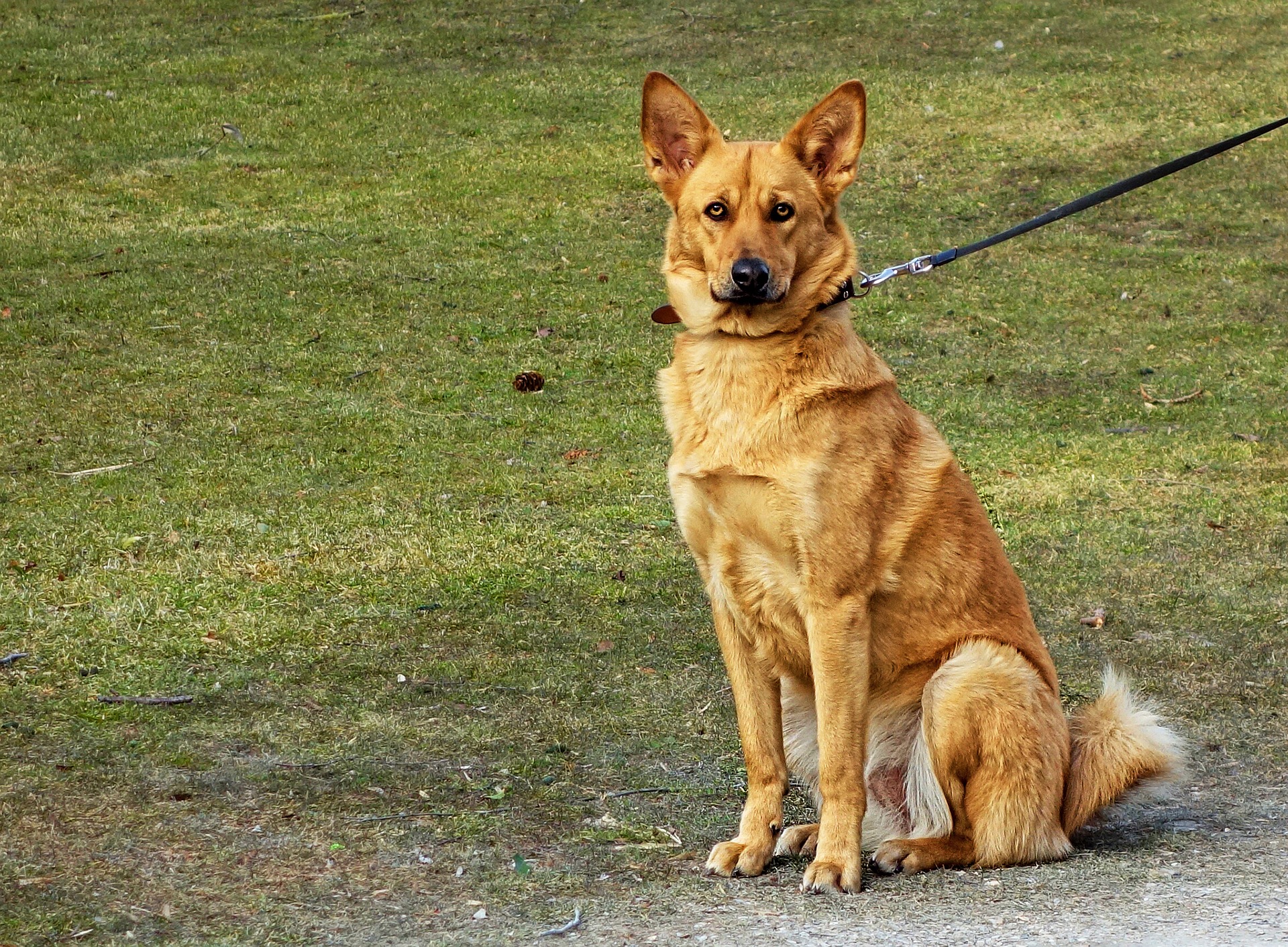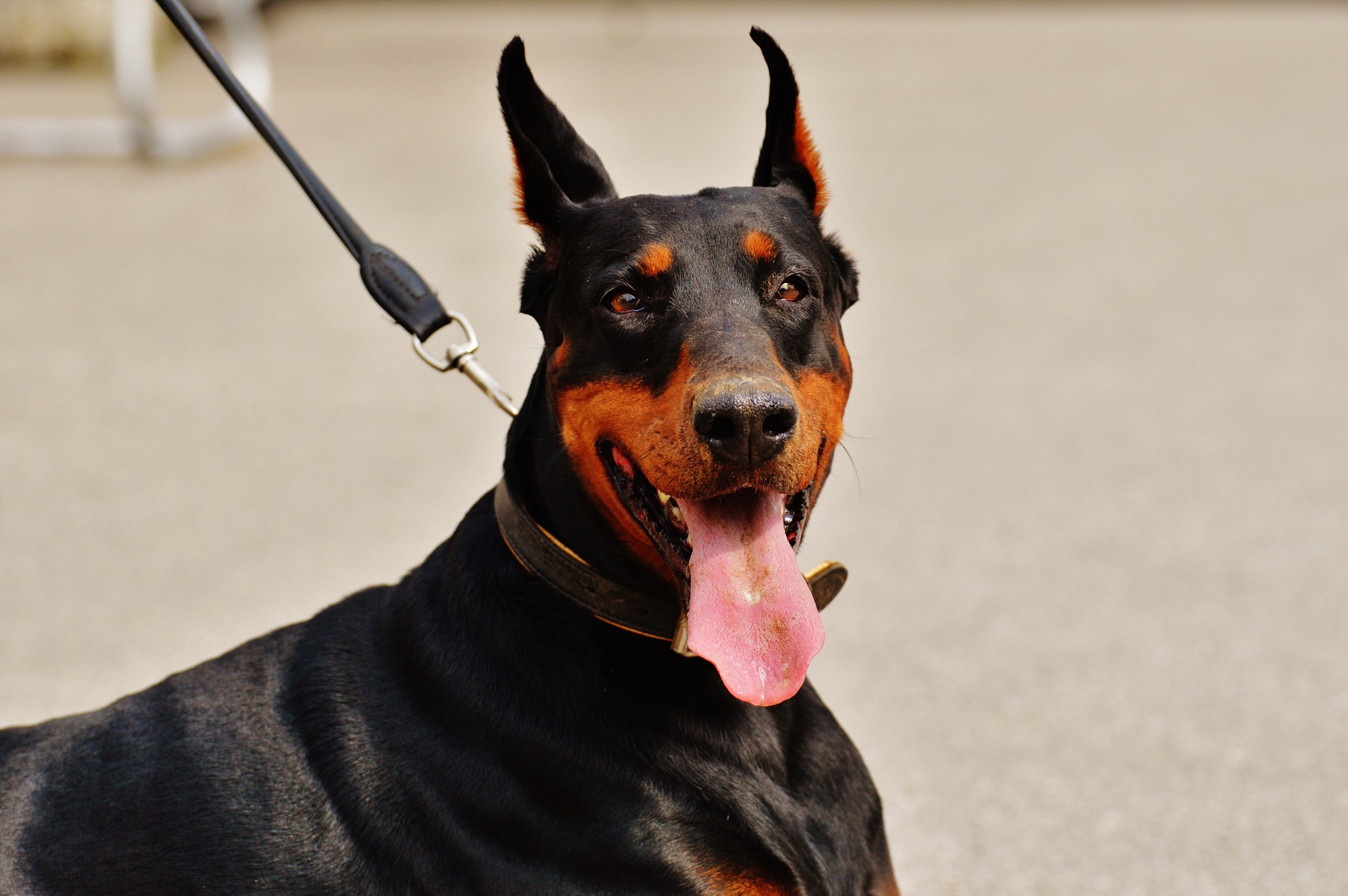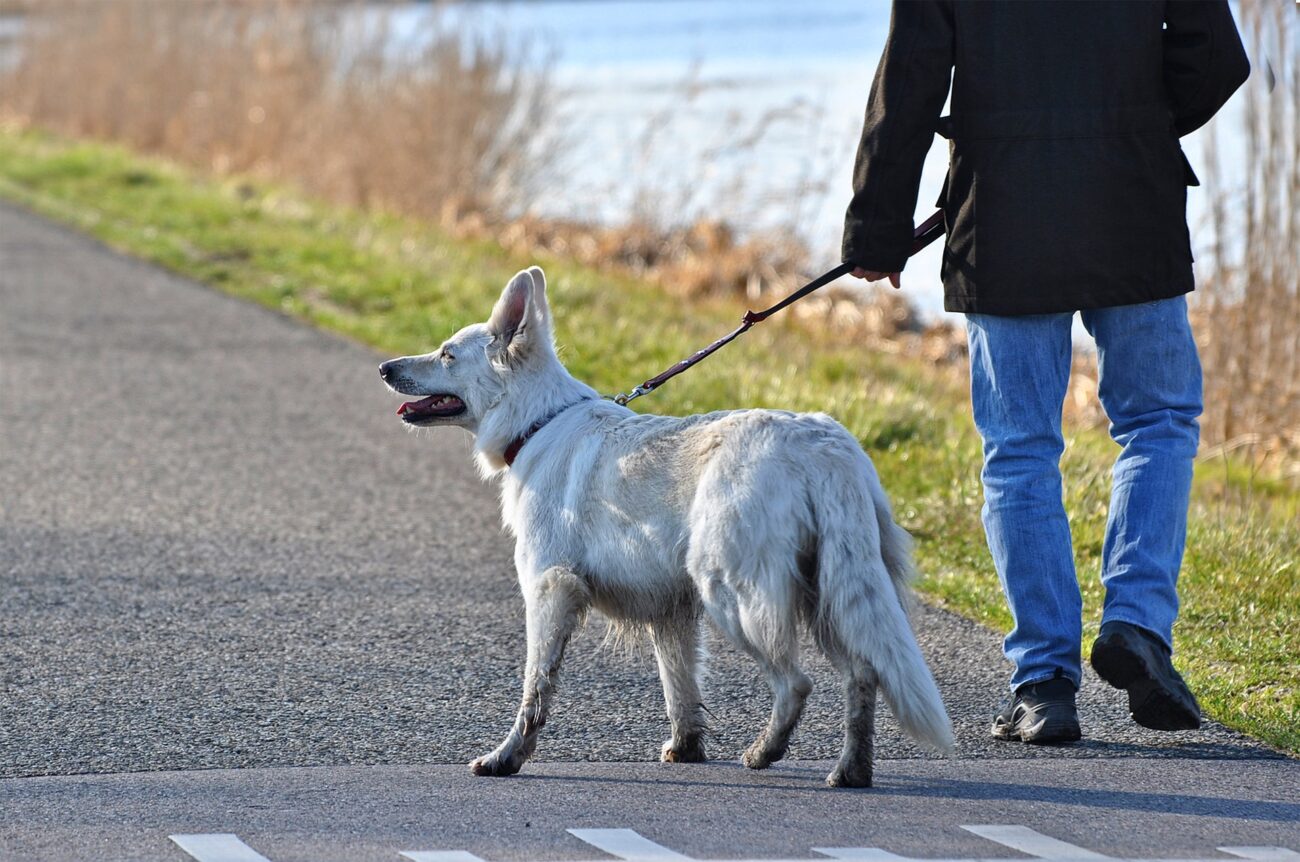If you’re thinking about leash training an older dog, then this is the most important page you’re ever going to read.
Because while most older dogs are considered to be obedient, loyal pets, there are times when they can be a little bit, shall we say …stubborn.
But does this mean you should give up hope and accept that you can’t teach an old dog new tricks?
In a word… No.
See, even though older dogs can be a little more set in their ways, it’s not impossible to get them fully leash trained with the right plan of action.
But before we get into the do’s and dont’s of how to make this happen, take a look at the short video below from Dan Abdelnoor over at The Online Dog Trainer.
During the video, Dan gives you an in-depth look at one of his previous client consultations where he demonstrates a few simple techniques to get your dog to walk calmly on the leash.
Watch the video, implement Dan’s training, and you should see a huge improvement in your dogs’ leashing habits…
Click Here To Visit The Online Dog Trainer
As you can see, it didn’t take Dan long to get a handle on the situation. And he did this by applying a few basic principles that took minutes to take effect.
However, this is only the tip of the iceberg when it comes to making lasting changes in your dog’s behavior.
If you really want to double down on the leash training process then I’d highly recommend checking out Dan’s membership site over at The Online Dog Trainer.
While it won’t do all the hard work for you, I guarantee that if you apply the training from Dan’s program. Your dog’s bad leashing habits will soon become a thing of the past.
Anyway, here’s the link to take a look: Click Here To Visit The Online Dog Trainer And Discover The Quick & Easy To Get Your Dog Fully Leash Trained… Even If You’ve Tried & Failed Before!
Alternatively, check out the video below for a sneak peek inside the member’s area…
Click Here To Visit The Online Dog Trainer
Benefits Of Leash Training An Older Dog
All canines need regular exercise (yes, even the laziest well into their old age) in order to remain stimulated, socialized, and fundamentally happy.
So having a dog who behaves on the leash is going to make a huge difference to your walking routine.
The last thing anyone wants after a hard day at work is to arrive home, take their dog on a walk and end up basically wrestling with him/her for half an hour.
And it’s not just large breeds either…
It may sound bizarre but size does not make a huge difference.
And while large dogs will exert more strength when on the leash. Smaller breeds can often run circles around you causing the leash to become tangled and knotted.
As you can see, even the calmest and most experienced dog owners are going to find their patience wearing thin.
And as we shall explore later, this can have devastating consequences for your relationship with Fido.
How many times have you taken your dog out walking and wondered in amazement at other owners enjoying calm and controlled walkies with their pets?
Why are those dogs so well behaved while yours may be little short of an utter nightmare?
Quite simply, it comes down to effective socialization which has established and ingrained the tenents of good behavior.
A high proportion of owners mistakenly assume that socialization is something that is only effective or even necessary during puppyhood.
In fact, good owners will be constantly reinforcing and praising good behavior throughout adulthood.
Even the smartest dog is going to be prone to developing bad habits or forgetting the rules.
Often one of the first places you will see this become apparent is within their behavior while walking on the leash.
Sometimes, dogs who may never have had an issue can suddenly become disruptive and difficult to take out.
So leash training older doggies can also be an aspect of training that needs to be occasionally revisited to help maintain your approved standards.
Obedience & Control
There are several other positives that can be taken from effective leash training.
And as much as your dog may wish to run around freely. The fact remains that you have to be able to instruct them to walk calmly by your side while displaying both authority and control.
Having an older dog who is receptive to this is consequently going to make further obedience training much more straightforward.
They will understand that good behavior equals tasty rewards and lots of praise. While on the other hand, bad behavior will cause these privileges to suddenly dry up.
So next time you see those well-behaved dogs strolling by, understand that they are doing so because they have made the rational assessment that being obedient will improve their quality of life.
This is what positive reinforcement is all about. And it’s something that even the most disruptive and chaotic dog will learn through effective and consistent training.
|
Want To Learn A Quick & Easy Way To Leash Train Your Dog? Discover How To Quickly Calm The Emotions Of Your Dog, And Finally Get Them Fully Leash Trained The Quick & Easy Way… Even If You’ve Tried & Failed Before! |
What NOT To Do
Without question, the most important thing not to do when training an older dog to walk calmly is to suddenly yank forcibly on their leash.
Simulating choking is simply not conducive to effective behavioral training, and will simply serve to agitate and stress out your dog even further.
Frustrating as it can be, losing your temper and effectively physically punishing your pooch is going to seriously damage your relationship and have serious repercussions for their general behavior.
The objective is to make your dog obediently follow your rules by their own free will.
And this is something you need to earn.

Lose Your Temper
Likewise, losing your temper and shouting at your dog is going to be counterproductive.
Many rehomed older dogs are going to experience forms of anxiety at first and they will almost certainly misinterpret what you are trying to achieve.
Dogs who are attention-seeking will notice that being a nightmare on their leash is a sure way to gain attention. And they couldn’t care less if it is positive or negative.
Those who are naturally timid and scared of the outdoors will be even more stressed out by being forcibly attached to an unpredictable and punitive owner.
Punish Your Dog
Punishment training techniques have long been discredited and under no circumstances should you consider using a choke or shock collar.
While they might literally force your dog into physical submission, they are going to terrify them.
Do you want to have a dog scared witless on your hands?
One who automatically falls into a sense of panic and fear every time they see their leash brought out?
Hopefully not, and should you choose to do so you will massively be enhancing the chances of your new buddy developing acute behavioral issues.
Walks should be fun for both you and your dog.
Using An Incorrect Collar
Something that owners often overlook is the quality and fit of their leash and collar.
Each dog ought to have its own unique collar – never reuse one that has been previously worn.
Collars that are too tight will cause your dog to be extremely uncomfortable during their walks regardless of what training methods you decide to implement.
Leashes are also important and it is generally a good idea to use thin ones for small dogs and thicker ones for more powerful breeds.
Either way, you ought to use a short leash while familiarizing your older dog with appropriate walking behavior.
WATCH VIDEO: Discover How To Finally Get Your Dog Fully Leash Trained Using A Few Simple Exercises That Take Just Minutes A Day To Apply… Even If You’ve Tried & Failed Before!
(Video will open in a new window)
How To Leash Train An Older (Adult) Dog
OK, so we have a dog with a comfortably fitting collar, a suitable leash and a pocket full of delicious snacks.
Now what?
Well, you need to remember that training begins before you even leave the house.
Chances are that your pooch is going to exhibit extreme excitement the moment they notice that you are preparing to take them for walkies.
Naturally, this is going to exact a considerable limitation on the effectiveness of any training. So we need to make them used to wearing their collar and leash but not necessarily expecting to be heading out right away.
Try putting their collar on and leash them up a few times at random over the day.
Leave it on for a few minutes and then remove it – be careful to do so entirely calmly each time.
It shouldn’t take too much repetition for it to click that they might be going out – but probably not.
The idea is that the dog will learn to taper their expectations. So when they eventually go out into the world, they will instead think “oh this is a pleasant surprise” instead of automatically going crazy.
Teaching The Heel Command
The first target is to make your dog obey this simple command.
Your dog is mostly going to display overexcitement when it sees, smells, hears, or even just feels something exciting.
You need to remember that their natural instinct is to pull on their leash.
And once they figure out that one direction isn’t going to work. They may try and ‘escape’ by running around you and pulling in alternative angles (inevitably tangling up their leash in the process).
They do so because whatever they perceive is deemed to be more interesting than walking with you.
In the first instance, this will occur the moment you open the door.
So rather than head out for walkies, instead take a step out and close the door.
Walk a couple of paces, then turn around and re-enter the home. Allow them time to calm down – consider even removing their leash and collar if you wish – then try again.
Eventually, and probably after dozens of repetitions, your dog will be so bored they will opt to stay calm, at least for the first stage.
When they decide to become excited, immediately halt and stay “heel” in a medium but neutral tone.
Try to avoid making eye contact or expressing any emotion.
Stay in this position as long as it takes for your dog to settle down, then resume and repeat on every occasion they become too excited.
For the first few times your walks may take three or four times longer than usual, but remain patient and only stop the walk when they play up.
Once they become used to going calm the moment you halt the walk, try implementing the “Heel” command a second before stopping.
Reward your dog with a treat every time they do so successfully, and before too long they will become far more obedient.
Vocalize your happiness when they walk alongside calmly. Especially when they see or come close to whatever usually triggers them (people, dogs, cars etc).
Establish Control
To effectively leash train an older dog you need to make them understand that you are exclusively in charge of the walk.
Just like they would in the wild, the objective is for them to unquestioningly follow you regardless of what direction you are taking.
Establishing this can be extremely frustrating, as sometimes they may fall into line right away just for the next day to become a four-legged demon again!
One tried and tested technique here is to change direction and walk away from whatever is making your dog excitable.
They will not understand at first why you are not similarly enthusiastic about what has caught their attention. And it may take many months for this to take a general calming effect.
Control your direction, and speed, at your own will.
Occasionally running or even cycling with your dog can help to cement this principle swifter. But the overall level of effectiveness depends much upon both consistency and regularity.
Related Post: Can You Train An Old Dog – Yes & Here’s How…

Walking By Your Side Calmly
Sooner or later your dog will come to realize that there is no point wasting their energy by pulling uncontrollably at their leash.
The objective is for them to realize that just walking calmly is going to reap far better rewards and that you control their supply.
Once your dog has a grasp over the heel command and becomes less liable for spontaneous overexcitement. Try and provide regular treats to reinforce how happy you are that they are behaving.
Establishing how frequently to reward calm walking is a personal matter and will depend on your own circumstances and the receptiveness of your mature dog.
A sensible example would be to treat them by either distance or time. But remember to reset the clock/distance every time they start to excessively pull.
When this happens, follow the advice above again and wait for them to settle down.
As obedience develops, you can gradually cut back on the number of treats you hand out.
Your dog won’t keep count, but they will remain expectant for some reward for behaving, so consider it effective dog bribery!
Final Thoughts
Most owners ought to be able to train older dogs by themselves providing they follow a regimented training plan.
Even the most stubborn or disturbed dog will be able to be coached effectively but do remember that it will take time.
Quite how long depends partially on the dog’s history. But even more important is the consistency by which we implement these methods and the example that we set.
Remember that no dog is going to deliberately seek to anger you. And it is understandable that older dogs who are rescued or from previously dull homes are going to be much more excitable than those that have been well socialized.
In exceptional circumstances, you may find it useful to consult a qualified and recommended local trainer or canine behavioral expert.
Should this be the case, there is a near certainty that there are also going to be other behavioral issues that need to be carefully worked out.
Leash training is without question one of the simplest and easiest techniques to undertake. And once you have this ingrained, you’ll likely be quite amazed at the knock-on benefits it will have over other aspects of their training.
WATCH VIDEO: Discover How To Finally Get Your Dog Fully Leash Trained Using A Few Simple Exercises That Take Just Minutes A Day To Apply… Even If You’ve Tried & Failed Before!
(Video will open in a new window)
FAQ: Frequently Asked Questions About Leash Training An Older (Adult) Dog!
Question #1…
How hard is it to leash-train an older dog compared to a younger, more receptive dog? And is it worth the time and effort?
Answer…
Let me just start by saying that leash training is one of those things that is always going to pay off in the long run, no matter how old (or young) your dog might be.
The problem, however, is having an effective plan of action so you can move forward in a positive way.
See, despite what you might think, training a dog at any age is always going to be met with ups and downs. But it’s ultimately how you deal with these changes that will make all of the difference.
As the old saying goes, you CAN teach an old dog new tricks. But it’s how you implement the right techniques and strategies to help them get there that will matter most.
Question #2…
My dog simply refuses to walk on the leash and will barely move when the leash is attached. What can I do to overcome this?
Answer…
While leash refusal can be problematic, it’s by no means impossible to overcome with time.
There are usually a few reasons for this behavior.
Firstly, the leash could be the wrong type or just uncomfortable in general.
To combat this, I’d highly recommend taking a look at some of the basics of choosing the right leash and collar here to get you set up correctly.
Second, your dog could be either fearful or anxious about heading outside and, as a result, refuses to budge no matter how much prompting you give them.
This can be a little more tricky to deal with. However, you can help your dog overcome this hurdle by using positive reinforcement techniques.
For this to be effective, start by attaching the leash to your dog’s collar indoors and giving them a little space to see how they react.
Next, place one of their preferred treats within close proximity (around 6 feet or so at first) and see if they make a move.
If they go for it, great. Now is the time to throw a little praise party for your dog by showering them with lots of positive attention to let them know they’ve done a good job.
After that, slowly increase the distance between your dog and their favorite snack and keep rewarding their behavior when they walk with the leash attached.
The idea here is to help your dog develop positive vibes when they’re leashed, so they learn it’s not something to be feared.
It can take several attempts to start seeing improvements. But in time, you should be able to move the party outdoors and eventually take them for a short walk without too many issues.
Question #3…
My dog pulls the leash and literally runs circles around me whenever I take them for a walk. How can I calm my dog, so they walk nicely on the leash?
Answer…
Again, the turn method shown in the video above is a great way to establish control of your dog before heading out for a walk. So if you haven’t already taken a look at the video above, I’d highly recommend scrolling back up and taking a few minutes to check it out.
In addition to this, I’d also recommend doing your best to dial down your dog’s emotional state before heading out for a walk for best results.
This is where the Online Dog Trainer Program I mentioned earlier come in really handy. Because it’ll teach you how to first establish control of your dog before leaving the home, leaving you much more likely to maintain that control when you’re out and about with your dog.
So hit the link above, watch the video, and implement the training. And you should see a marked improvement in your dog’s behavior for the better.
What are your experiences with leash training an older dog? Feel free to share your success stories in the comments below…

